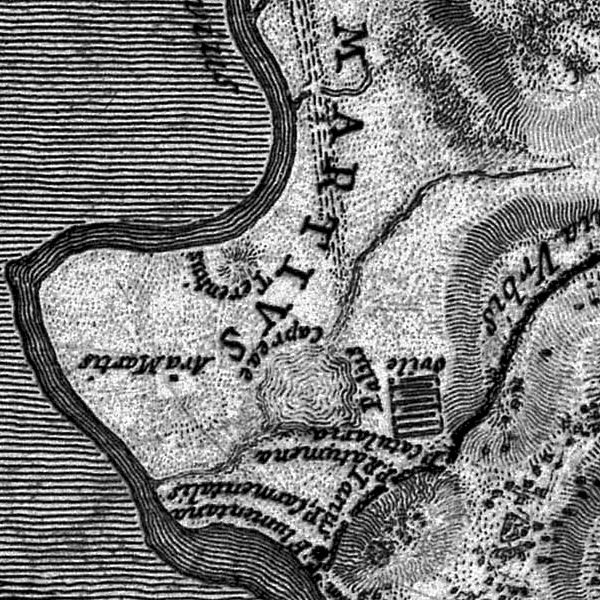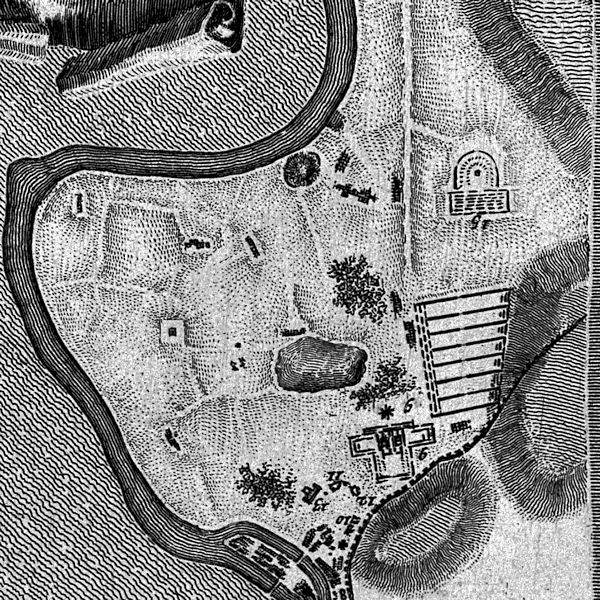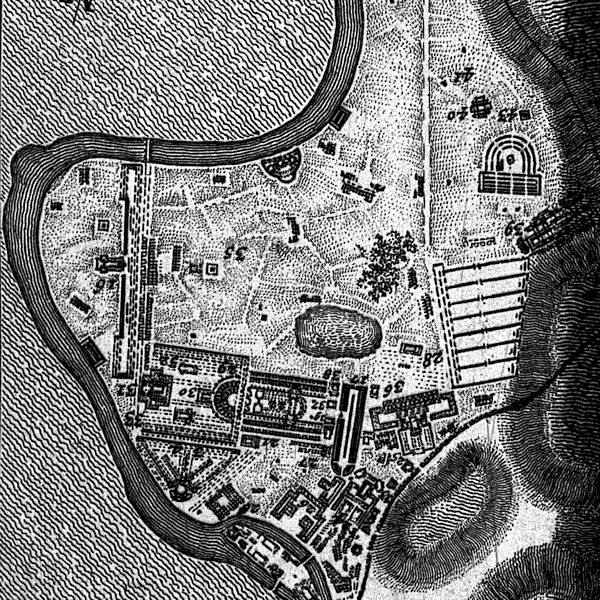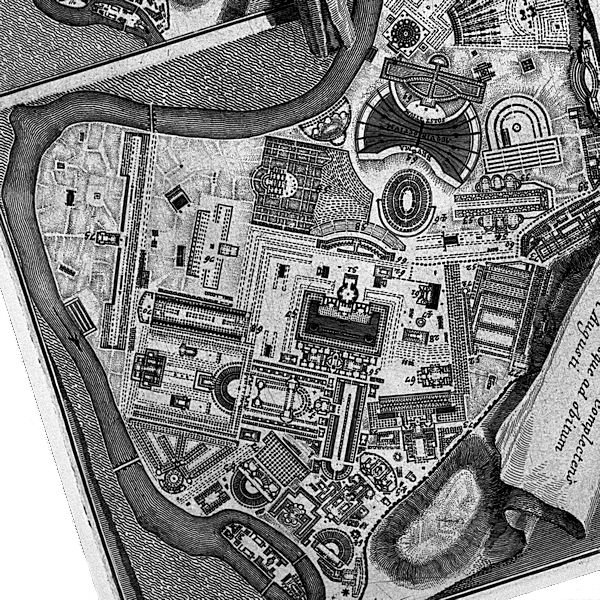Encyclopedia Ichnographica | Palus Caprae | 1 |
Still another long valley lies between the Pinician and the Quirinal, and through it ran a stream which emptied into one of the the two principal swampy ponds of the campus Martius, the Caprae palus. Another brook flowed from the western slope of the Quirinal, near the porta Salutaris, westward across the campus Martius. Topographers are not entirely agreed as to which of these last two streams is the Petronia amnis, which had its source in the Cati fons. The probability is that the southernmost of the two is the original Petronia amnis, and that therefore the Cati fons is to be located on the Quirinal, near the present church of S. Silvestro a monte Cavallo, where there are still numerous springs.
(Platner)
|
|
|
On the Nones of July (7 July), Romulus was reviewing the army on the Campus Martius near the Goat Marsh. Suddenly a storm broke out, accompanied by an eclipse of the sun. A deluge consumed the place. When it cleared and the terrified Romans reemerged from their places of refuge, their king was nowhere to be found. Julius Proculus claimed that Romulus appeared to him in a dream and announced that he was henceforth to be known as the god Quirinus, because the gods had abducted him to live among them. Although Romulus is not said to have died, his tomb was supposed to be located on the Comitium under the Lapis Niger.
|
|
|
Quondam © 2014.12.28 |



